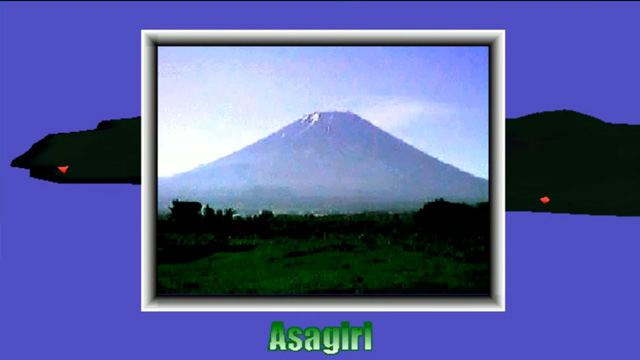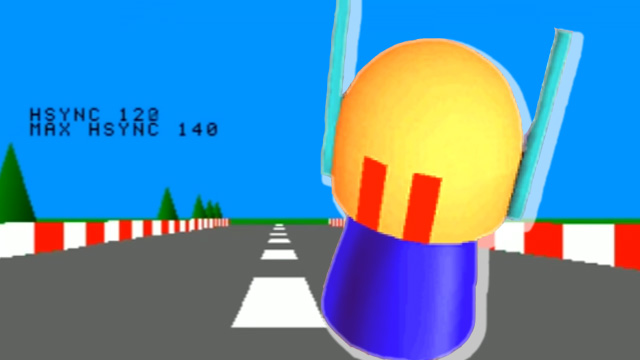Remember Net Yaroze? I’d wager that a considerable portion of you have a simple response: “No.” But I’d also wager that after reading the headline, a not-insignificant number of you would have had some deeply embedded memory unlodged in the back of your brain, throwing you right back to the ’90s when you played one of these strange PlayStation games.
What is Net Yaroze?

Net Yaroze is the name of a development kit for the original PlayStation, allowing independent developers to try to create their own games on the console. For $750, hopeful indie devs would get a PlayStation debugging unit and a development kit, with them able to connect it to their PC and create games for the hardware.
Sony created a forum for users to share their creations, and then certain games popular among this community would make their way to demo discs bundled with official PlayStation magazines in PAL regions. This is how I was introduced to the incredibly weird world of Net Yaroze games, where fledgling developers showed off their unusual and unpolished ideas in an era when 3D gaming was still in its infancy.
Nowadays, indie devs have a myriad of tools at their disposal to create games as they see fit, and they also have the benefit of a large number of trailblazing low-budget games from which to draw their inspiration. Back in the days of Net Yaroze, no such comparables existed, and they were developing their projects just as games had made the seismic shift into 3D. Even now, many indie games opt for side-scrolling 2D gameplay out of ease and budget constraints, so the odds were stacked against any Net Yaroze games being anything more than peculiar oddities.
And that was the case. There were nearly 100 Net Yaroze games made available to play, and each of them took a developer’s basic idea and forced it into what felt like a video game, yet something was decidedly “off.” When I played these games back in the ’90s, I had no idea that Net Yaroze was a PlayStation debugging unit, and was always confused as to why these games sat on demo discs next to major video games such as Crash Bandicoot, Gran Turismo, and the like. They stood out like a sore thumb, but this made them linger in the memory longer than many “proper” games.
How Net Yaroze games were basically liminal spaces
Take The Incredible Coneman, for instance — essentially a 3D Pac-Man, the limitations placed on the developer means that the recognizable yellow Atari mascot is replaced by an indecipherable, limbless block of a protagonist, walking around a maze floating in a Windows screensaver background, all while a single bassline is played on repeat.
Like many Net Yaroze games, The Incredible Coneman feels like it’s stuck between both the familiar and the unknown. It’s recognizable as a video game, but something about it doesn’t feel right, from the block color textures to the repeated audio and the jumble of primary shapes you control. Basically, it feels like you’re in a liminal space.
Liminal spaces have been a growing online phenomenon over the past few years, ever since a thread on the 4chan paranormal board asked users to “post disquieting images that just feel ‘off'” (via Aesthetics Wiki). This led to a rise in images of liminal spaces posted online, including the hugely popular @SpaceLiminalBot Twitter account, which posts images related to the phenomenon to 1.2 million followers.
— Liminal Spaces (@SpaceLiminalBot) October 11, 2022
Images of liminal spaces typically feature a location in a transitionary period, whether it be an abandoned mall, a desolate waiting room, or an empty hallway. They often evoke a confusing and unsettling feeling of both discomfort and nostalgia — there’s a part of you that recognizes them, yet you know that’s impossible. Net Yaroze provided the video game equivalent of this.
Take Yaroze Rally. It’s a racing game, but it takes place in a barren environment, with nothing but a grey track lined with the same tall buildings that pop in and out of view. There’s no other audio aside from a dull thud intended to mimic a car engine. The track itself doesn’t follow any traditional path, either — the checkpoints are scattered around the course, meaning you’ll have to perform almost 180-degree turns to keep up with the pack. It feels like a racing game developed by artificial intelligence:
Or there’s Pandora’s Box, an eerie puzzle game where you walk through a claustrophobic series of red brick walls to push boxes around. This mundane activity is soundtracked by the same maddening piano loop, and the occasionally breathy “oof!” of the player-character as they bump into their surroundings:
Then there’s Adventure Game, the only Net Yaroze game I played back in the day that remotely came close to being worthwhile. This parody lampooned role-playing games — of which there weren’t very many 3D examples at the time — with a distinctly British sense of humor. Though, like other Net Yaroze games, that unfinished feeling is still present throughout. The characters are faceless, the backgrounds are little more than color gradients, and its soundtrack sounds like a church organ has been forced through a synthesizer.
Net Yaroze developers didn’t intend for their games to be so haunting. Much like liminal spaces, there is nothing that should be unsettling about them, yet it’s their haunting familiarity that makes them creepy. With there being a resurgence in PS1-style horror games such as No One Lives Under the Lighthouse and the appropriately-named Haunted PS1 Demo Disc 2021, it’d be cool to see something inspired by these eerie homemade games.








